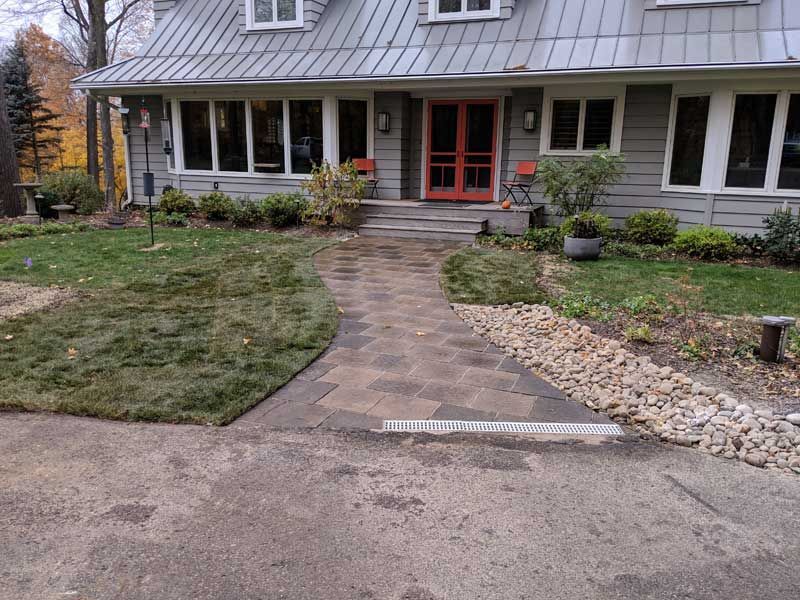Patio Drainage Issues
Water and drainage problems can happen anywhere on your property. The water problems are especially troublesome on or near an area that you would like to enjoy like a patio. There are a wide variety of drainage issues that patios can cause and a large number of ways to fix those problems. We’ll discuss both the problems and solutions in this blog post.
Patio Drainage Issues and What Causes Them?
The most common hardscape issue we see as outdoor drainage experts is water draining toward the house from the patio. The water drains toward the house because the patio was installed incorrectly. Patios need to have the proper slope away from the home and that slope should be 1/4″ per linear foot of patio.
Another reason patio drainage might fail is that the patio could have also shifted throughout it’s lifetime. The shifts could happen for a number of reasons but the underlying base material is the main concern. If the base material is not thick enough, the freeze-thaw cycle of winter can raise and lower the patio causing water issues either toward the house or on the patio itself.
Cracking patios are also a concern, especially for full concrete patios. They are caused by that same freeze/thaw issue. Water expands when it turns to ice and then contracts when it melts. Doing this cycle numerous times is bad news for any concrete patio.
Solutions and Fixes to Patio Drainage Issues
There are numerous ways to fix any and all of these patio drainage issues. All of the solutions involve fixing or adjusting for the freeze-thaw cycle. Our first solution would be to install lots more base material or use crushed rock that will let the water drain down to prevent holding water. The held water is what goes through the freeze thaw schedule. In this scenario, we would completely pull up the patio and start fresh but re-use the stones. We would remove the old sand under the stones and then add lots more base material or crushed rock. Having more base material or crushed rock allows for more water to flow further down and prevent any movements of stones or cracking.
While fixing the base is the most common solution, there are other options we can explore if the drainage issues are extensive. While installing the new base, we can put perforated PVC schedule 40 under the patio to drain water away. This system of pipes will take the water that drains through the patio and move it to a safer spot like a dry well or swamp area outside the patio. We can also install an above ground channel drain in the patio. The channel drain can be used along garages or doors or sidewalks where there is a transition from one type of material to another. The channel drain will stop water from collecting in a certain area and move it away.

For any and all outdoor drainage issues, we strongly suggest you consult with a trusted, experienced landscape designer
who can help you get the most value for your money now and in the future.
The post Patio Drainage Issues
appeared first on KG Landscape Management.










